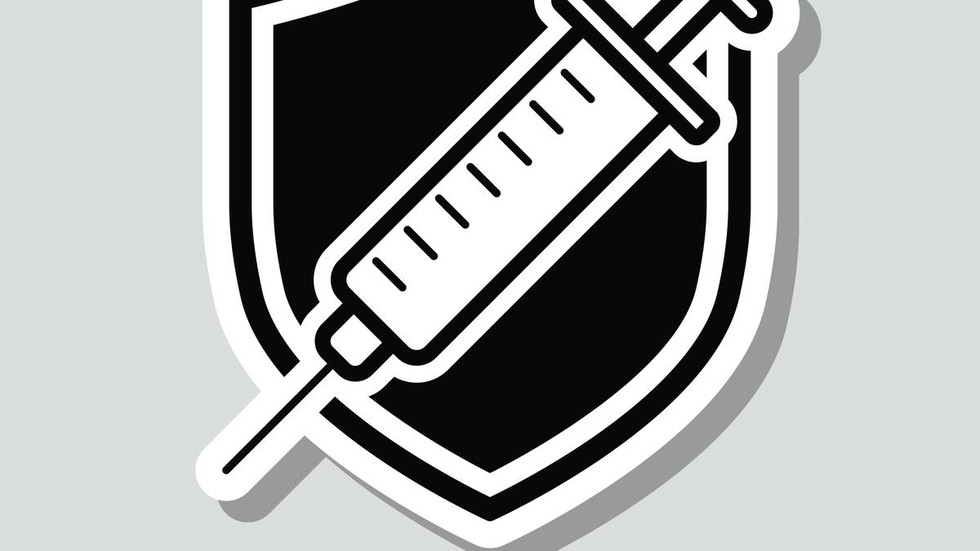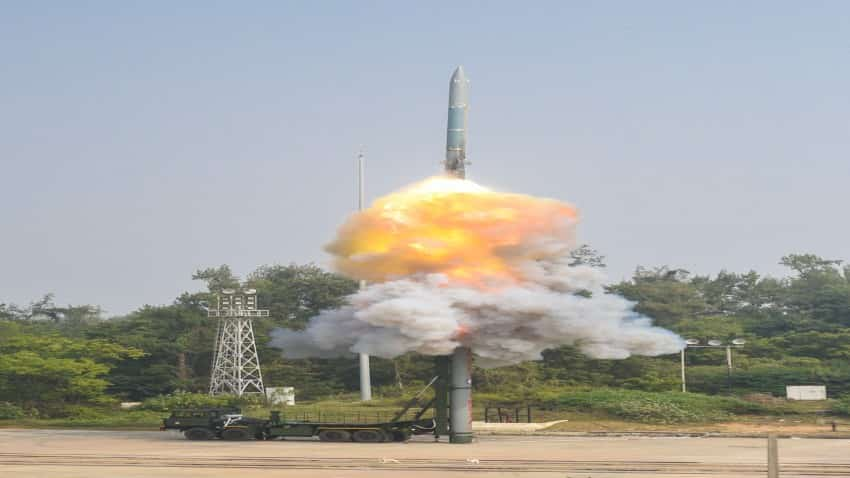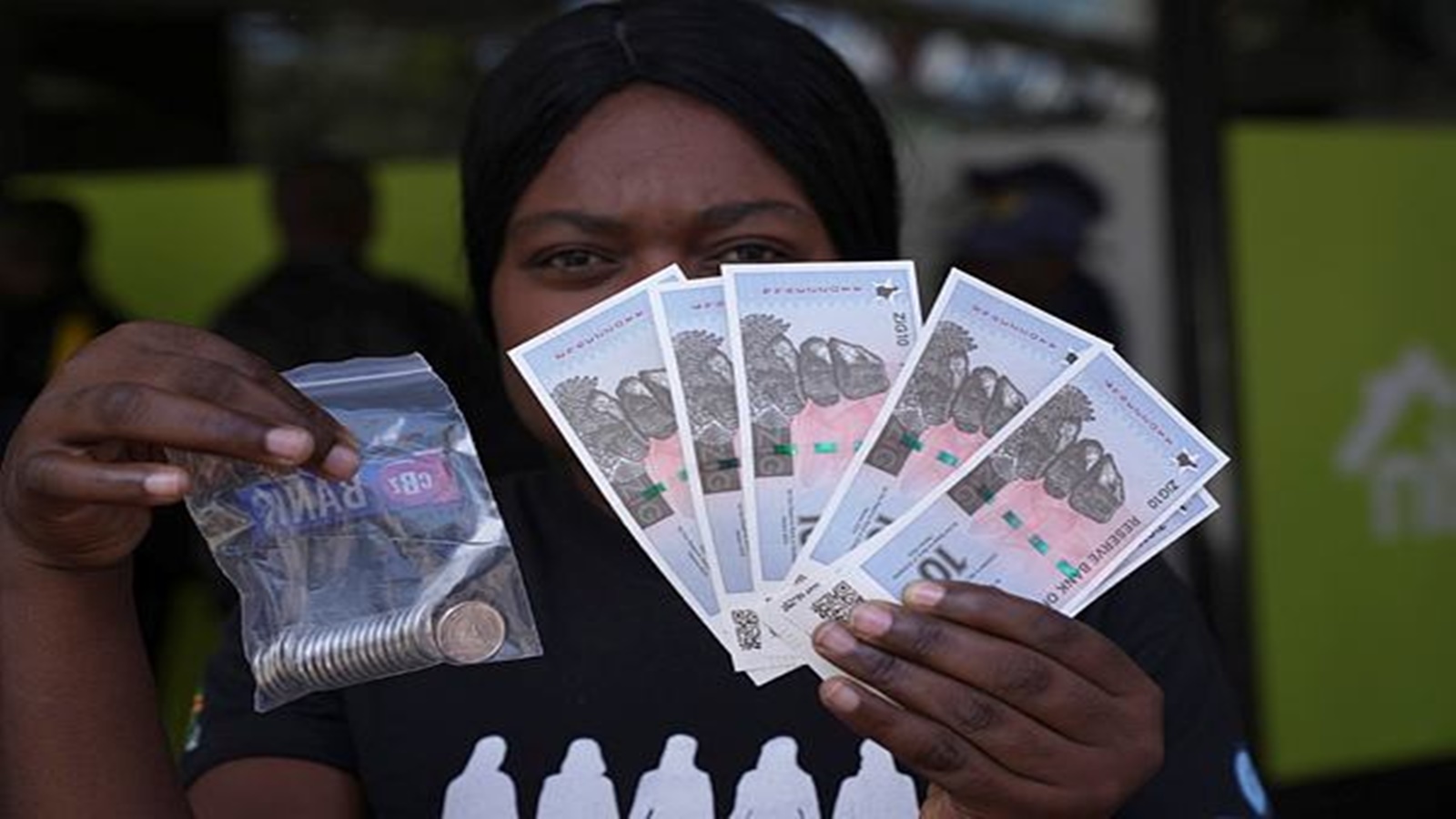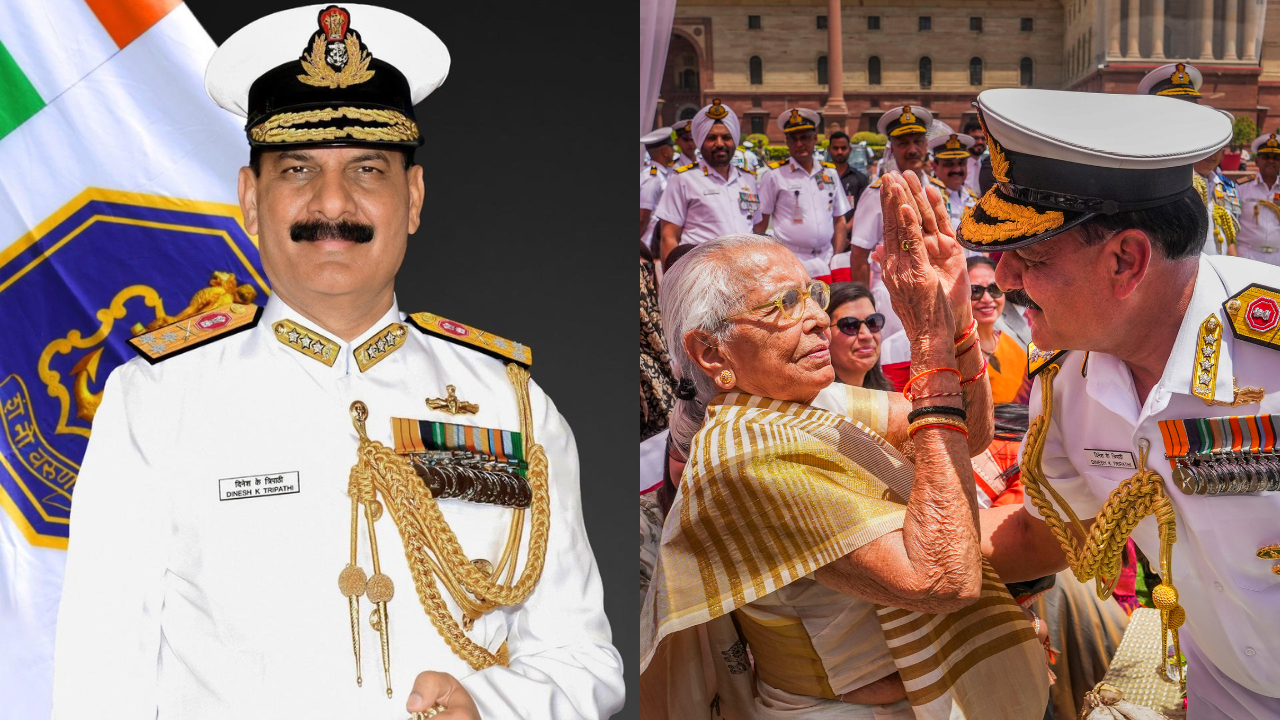Current Affairs : 1 May 2024
Current Affairs : 1 May 2024
Essential Programme on Immunization
The year 2024 commemorates 50 years since the launch of the Expanded Programme on Immunization (EPI) by the World Health Organization (WHO) in 1974 which is now known as Essential Programme on Immunization.

About Essential Programme on Immunization:
- It was launched as the Expanded Programme on Immunization (EPI) by World Health Organisation in 1974 to ensure that all children, in all countries, benefited from life-saving vaccines.
- It has evolved into what is now commonly known as the Essential Programme on Immunization.
- Disease covered (Total 13):
- Initially this programme focused on protection against six childhood vaccine-preventable diseases namely Bacillus Calmette-Guérin (BCG), diphtheria, pertussis, tetanus, polio, and measles.
- Later on WHO added 7 more disease under this initiative Haemophilus influenzae type B (Hib), Hepatitis B (HepB), rubella, pneumococcal disease (PNC), rotavirus (Rota), human papillomavirus (HPV) and COVID-19 (for adults).
India’s Universal Immunization Programme (UIP)
- India launched the EPI in 1978, which was later renamed as the Universal Immunization Programme (UIP) in 1985.
- Objectives:
- To rapidly increase immunization coverage.
- To improve the quality of services.
- To establish a reliable cold chain system to the health facility level.
- Monitoring of performance.
- To achieve self-sufficiency in vaccine production.
- Eligibility:
- All beneficiaries’ namely pregnant women and children can get themselves vaccinated at the nearest Government/Private health facility or at an immunization session site (Anganwadi centres/ other identified sites) near to their village/urban locality on fixed days.
- The UIP covers all sections of the society across the country with the same high quality vaccines.
- Under UIP, immunization is providing free of cost against 12 vaccine preventable diseases.
- Nationally against 9 diseases – Diphtheria, Pertussis, Tetanus, Polio, Measles, Rubella, severe form of Childhood Tuberculosis, Hepatitis B and Meningitis & Pneumonia caused by Hemophilus Influenza type B.
- Sub-nationally against 3 diseases – Rotavirus diarrhoea, Pneumococcal Pneumonia and Japanese Encephalitis; of which Rotavirus vaccine and Pneumococcal Conjugate vaccine are in process of expansion while JE vaccine is provided only in endemic districts.
Thrombosis with Thrombocytopenia Syndrome
Recently, AstraZeneca (AZ) has admitted its Covid vaccine may cause Thrombosis with Thrombocytopenia Syndrome (TTS).
About Thrombosis with Thrombocytopenia Syndrome:
- It is characterized by blood clots (thrombosis) combined with low levels of platelets (thrombocytopenia), which are necessary for blood clotting.
- It often involves unusual blood clot locations, such as in the brain (cerebral venous sinus thrombosis) or abdomen.
- Symptoms of TTS: Severe or persistent headaches, blurred vision, Shortness of breath, Chest pain, Leg swelling, Persistent abdominal pain and Easy bruising or tiny blood spots under the skin beyond the injection site etc.
- It is classified into two tiers based on the location of the blood clot and the severity of the symptoms.
- Tier 1:
- Uncommon site of thrombosis (like the brain-cerebral venous sinus thrombosis or the gut such as splanchnic vein, associated with bowel ischaemia and surgery, portal vein or other rare venous and arterial thromboses).
- Thrombosis in more common locations (deep vein thrombosis or pulmonary embolism).
- Platelet count is less than 1,50,000 per microlitre.
- A positive anti-PF4 ELISA result is supportive, but not required for diagnosis.
- Tier 2:
- Common sites of thrombosis include leg or lungs (venous thromboembolism, deep vein thrombosis, pulmonary embolism).
- Platelet count is less than 1,50,000 per microlitre.
- A positive anti-PF4 ELISA result is required.
- Tier 1 TTS carries a higher risk of mortality and morbidity than Tier 2. Tier 1 could be more common among younger age groups.
La Cumbre volcano
Recent lava spewing from La Cumbre volcano on Galápagos Islands destroying habitat of rare land iguanas.

About La Cumbre volcano:
- It is located on Fernandina Island – the third largest island in the Galápagos Islands.
- It lies directly atop the mantle plume, or hot spot, that produced all of the Galápagos Island. It is located around 1,125 kilometres off mainland Ecuador and erupted for the first time since 2020.
- The volcano has a large crater, or caldera, at its summit that harbors a permanent crater lake. This lake attracts a wide variety of animals including tens of thousands of Galápagos land iguanas (Conolophus subcristatus) that lay their eggs in nests within the caldera.
Key facts about Galápagos land iguana
- It is one of three species of land iguana endemic to the Galapagos Islands (the others being the Santa Fe land iguana and the Galapagos pink land iguana).
- It is a very large species of lizard in the family Iguanidae. It is primarily an herbivores species.
- This large cold-blooded reptile has a mutualistic relationship with finches, which can often be seen sitting on their backs, picking ticks from between their scales.
- It is active during the day spending their time foraging or basking on rocks; at night they sleep in burrows.
- Conservation status
- IUCN: Vulnerable
Goldman Environmental Prize
Alok Shukla, convenor of the Chhattisgarh Bachao Andolan and founding member of the Hasdeo Aranya Bachao Sangharsh Samiti, has been awarded the 2024 Goldman Prize from Asia.

About Goldman Environmental Prize:
- It recognizes individuals for sustained and significant efforts to protect and enhance the natural environment, often at great personal risk. It is also known as the Green Nobel.
- It recognizes grassroots environmental heroes from roughly the world’s six inhabited continental regions: Africa, Asia, Europe, Islands & Island Nations, North America and South & Central America.
- The Goldman Prize views “grassroots” leaders as those involved in local efforts, where positive change is created through community or citizen participation.
- The first Goldman Environmental Prize ceremony took place on April 16, 1990. It was timed to coincide with Earth Day.
Key facts about Hasdeo Aranya region:
- It is a sprawling forest in the northern part of Chhattisgarh which is known for its biodiversity and also its coal deposits.
- The forest falls under Korba, Surajpur and Sarguja districts with sizeable tribal population. The Hasdeo River, a tributary of Mahanadi, flows through it.
- It is the largest un-fragmented forests in Central India consisting of pristine Sal (Shorea robusta) and teak forests.
Patachitra Painting
The first-generation women patachitra artists of West Bengal’s village of Naya are selling their work online and are being recognised the world over.
/media/Danceform_in_Pattachitra_Subhalaxmi_Chintak.jpg)
About Patachitra Painting:
- It is a general term for traditional, cloth-based scroll painting based in the eastern Indian states of Odisha and West Bengal. It is believed to have originated as early as the 12th century.
- In the Sanskrit language, “Patta” literally means “cloth” and “Chitra” means “picture”.
- It is known for its intricate details as well as the mythological narratives and folktales inscribed in it. Most of these paintings depict stories of Hindu deities.
- It is one of the ancient artworks of Odisha, originally created for ritual useand as souvenirs for pilgrims to Puri, as well as other temples in Odisha.
- Patachitras are a component ofancient Bengali narrative art, originally serving as a visual device during the performance of a song.
- Making:
- Pattachitra paintings are made on a special canvas where cotton sarees are layered with tamarind paste and then coated with clay powder.
- Traditionally, cotton canvas was used; now, both cotton and silk canvas are used for paintings.
- Once the canvas becomes sturdy, colours are filled in directlywithout any initial sketches. It is a tradition to complete the borders of the painting first.
- All colours are obtained from natural sources like lamp soot and powdered conch shells.
- Each painting can take up to weeks or months to be prepared.
Hangor Class Submarine
Recently, China has launched the first of eight Hangor-class submarines being built for Pakistan. It is a diesel-electric attack submarine.

- It is bigger than the Indian Navy’s Kalvari class submarines, with a displacement of 2,800 tons compared to 1,775 tons for the Kalvari class.
- The Hangor class has Air independent propulsion (AIP).
- AIP allows submarines to stay submerged for longer periods.
- AIP is planned to be installed on the first Scorpene class submarine INS Kalvari in 2024.
- In terms of armament, both carry torpedoes and anti-ship missiles, The Kalvari class likely has more modern and battle-tested armament.
- The bigger size of the Hangor class may hamper its manoeuvrability in littoral waters compared to the smaller Kalvari class.
DRDO’s Supersonic Missile-Assisted Torpedo Delivery System Achieves Success
The Defence Research and Development Organisation (DRDO) has achieved a significant milestone in enhancing India’s anti-submarine warfare capabilities with the successful flight-test of the Supersonic Missile-Assisted Release of Torpedo (SMART) system. This next-generation torpedo delivery system was successfully flight-tested on May 01, 2024, at around 8:30 AM from Dr. APJ Abdul Kalam Island off the coast of Odisha.

Extending the Range of Lightweight Torpedoes
- SMART is a missile-based system designed to significantly extend the range of lightweight torpedoes used by the Indian Navy. By incorporating advanced technologies, this canister-based system can deliver torpedoes far beyond their conventional range, providing a strategic advantage in anti-submarine warfare operations.
Advanced Sub-Systems and Mechanisms
The SMART system comprises several cutting-edge sub-systems, including:
- Two-stage solid propulsion system
- Electromechanical actuator system
- Precision inertial navigation system
Additionally, the system incorporates advanced mechanisms such as symmetric separation, ejection, and velocity control, which were successfully validated during the flight-test.
Enhancing Naval Capabilities
- Defence Minister Shri Rajnath Singh congratulated the DRDO and industry partners on the successful flight-test, stating, “The development of the system will further enhance the strength of our Navy.”
- Dr. Samir V Kamat, Secretary, Department of Defence R&D and Chairman DRDO, lauded the synergistic efforts of the entire SMART team and encouraged them to continue on the path of excellence.
Revolutionary System for Naval Warfare
- With its advanced capabilities, the SMART system represents a significant advancement in India’s naval warfare capabilities. By extending the range of lightweight torpedoes, this system will provide the Indian Navy with a strategic advantage in safeguarding the nation’s maritime interests.
Zimbabwe Introduces New Currency Amid Skepticism
Zimbabwe has launched a new currency called the ZiG (short for Zimbabwe Gold) in an attempt to address the country’s long-running currency crisis. The ZiG, backed by Zimbabwe’s gold reserves, was introduced electronically in early April and has now been released in banknote and coin form.

Mistrust and Rejection
- Despite being the sixth currency since the collapse of the Zimbabwe dollar in 2009, the ZiG is already facing mistrust and rejection from some quarters. Several government departments and businesses are refusing to accept the new currency, preferring to stick with the U.S. dollar, which remains the most trusted currency among Zimbabweans.
Conflicting Policies
- While some businesses, like gas stations, have been allowed to reject the ZiG in favor of U.S. dollars, others are being ordered to use the new currency exclusively, facing punishment if they don’t comply. This conflicting approach has raised suspicions about the government’s commitment to the ZiG.
A Painful History
- Zimbabwe’s hyperinflation crisis in 2009, which saw prices spiraling out of control and the printing of a 100 trillion Zimbabwe dollar banknote, remains a painful memory for many Zimbabweans. The U.S. dollar became a lifeline during this period, and its use has continued despite subsequent currency attempts.
India and Europe to Strengthen 6G Collaboration
India’s Bharat 6G Alliance is set to sign a cooperation agreement with Europe’s Industry Alliance 6G, following a similar agreement with the US. This partnership aims to foster collaboration in developing 6G technology.

Agreement Signing Imminent
- The Bharat 6G Alliance and Industry Alliance 6G are poised to sign an agreement soon, with plans to finalize collaboration details in the coming quarter.
Memorandum of Understanding (MoU) Expected
- Similar to the agreement with the US, the partnership between Bharat 6G and Industry Alliance 6G is likely to take the form of a memorandum of understanding.
Bharat 6G Alliance: An Overview
- Established by India’s Department of Telecommunications, the Bharat 6G Alliance aims to drive 6G technology development in India by bringing together industry players, academia, and research organizations.
Global Collaborations for 6G Innovation
- India’s collaboration with both the US and Europe underscores a concerted effort to accelerate 6G innovation globally, with a focus on standards development, research, and market access for Indian firms.
Admiral Dinesh Tripathi take charge as 26th Naval Chief
Admiral Dinesh Kumar Tripathi assumed office as the 26th Chief of Naval Staff (CNS) on 30 April 2024. Admiral Dinesh Tripathi took the place of Admiral R.Hari Kumar, who demitted his office on 29 April 2024.

About Dinesh Kumar Tripathi
- Admiral Dinesh Kumar Tripathi is an alumnus of Sainik School Rewa, Madhya Pradesh and the National Defence Academy. He was commissioned in the Indian Navy in 1985.
- He rose through the ranks to become the Commander of the Western Naval Command before becoming the vice-admiral (vice-chief) of the Indian Navy in June 2019. He was also made the commandant of the prestigious Indian Naval Academy at Ezhimala, Kerala. He was the director general of naval operations from July 2020 to May 2021.
- Admiral Dinesh Tripathi is a specialist in electronics and communication warfare. He has served on the Navy’s guided missile destroyer INS Mumbai as an executive officer and principal warfare officer.
- He graduated from the Defence Services Staff College, Wellington, Tamil Nadu, and attended the Naval Higher Command Course and the Naval Command College at the US Naval War College, Newport, Rhode Island.
- The Indian Navy is one of the three armed forces of India, the other being the Army and Air Force.
- It is responsible for guarding the maritime boundary and its maritime interests.
- The Indian Navy is under the administrative control of the Ministry of Defence, government of India. The President of India is the chief commander of the armed forces, including the Indian Navy.
History of the Indian Navy
- The British established the modern Indian Navy as the Royal Indian Navy on 2 October 1934. On 26 January 1950, the Indian constitution was promulgated, and the Royal Indian Navy was renamed the Indian Navy.
- Admiral Sir Edward Parry was the first Commander-in-Chief of the Indian Navy. The post of Commander in Chief was changed to Chief of Naval Staff in 1955, and the first chief of Naval staff was Admiral Sir Edward Parry.
- Vice Admiral RD Katari assumed office as the first Indian Chief of the Naval Staff on 22 April 1958.
Command Structure of the Indian Navy
- The Indian Navy has three commands, and it is part of the Tri-Service Command with the Army and the Air Force.
- The Indian Navy has two operational Commands: Western Command, with its headquarters in Mumbai, and Eastern Command, located in Visakhapatnam, Andhra Pradesh.
- The Indian Navy’s Southern Naval Command is the Training Command of the Indian Navy.
- The Naval Command is headed by an officer of the rank of Vice-Admiral designated as the ‘Flag Officer Commander-in-Chief’.
- The Indian Navy is part of the Tri-Service Command, which is based in Port Blair, Andaman and Nicobar. The Tri Command is headed by a commander-in-chief, who is appointed on rotation from the three forces.
- The Indian Navy’s major bases are located in Mumbai, Goa, Karwar, Kochi, Chennai, Visakhapatnam, Kolkata, and Port Blair.
Fleets of the Indian Navy
- The Indian Navy has two fleets, Eastern and Western. A naval fleet is a group of ships, submarines, etc. that operate under one authority.
- The Indian Navy’s Western Fleet is based in Mumbai, and the Eastern Fleet is based in Visakhapatnam.
